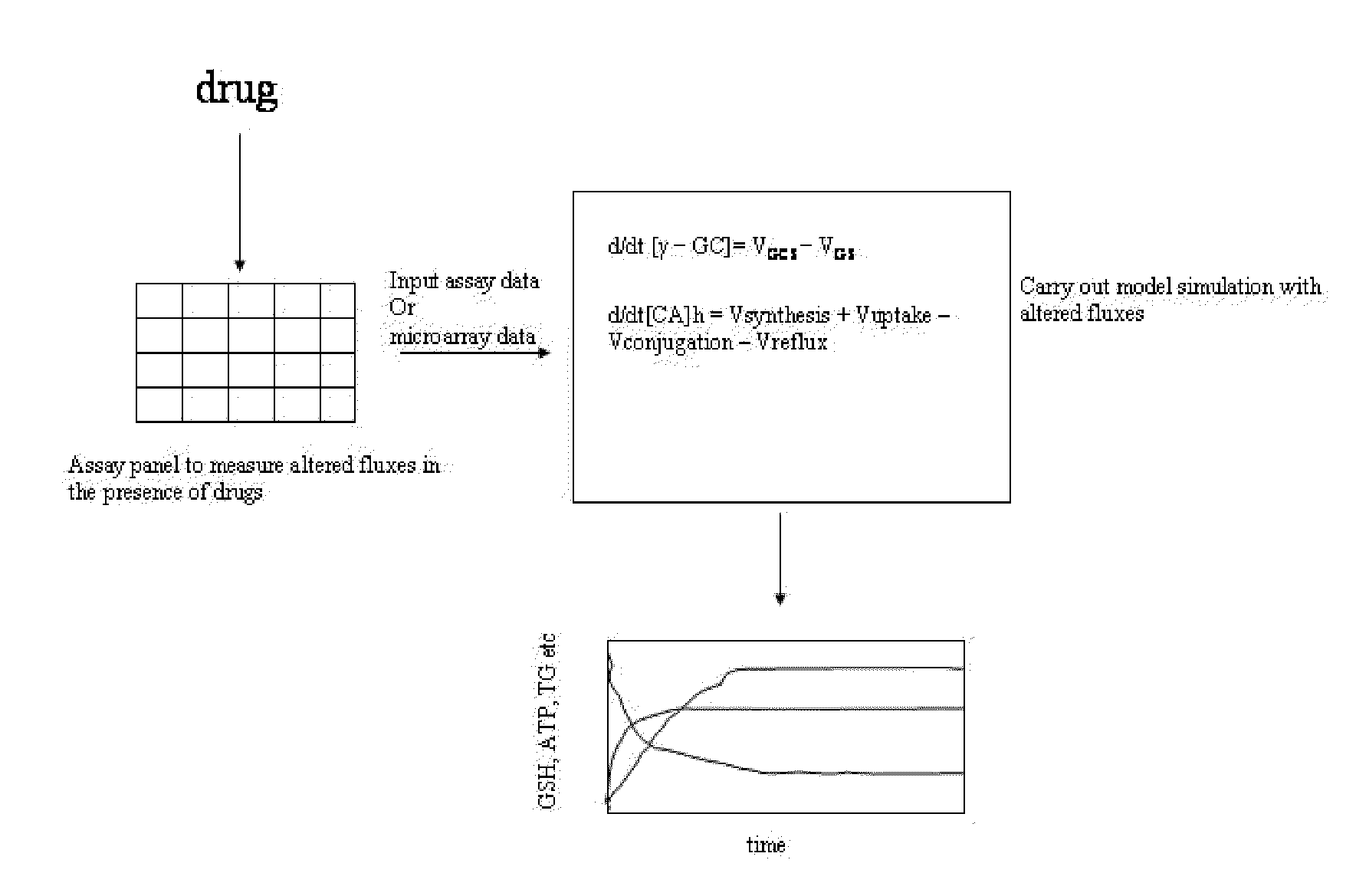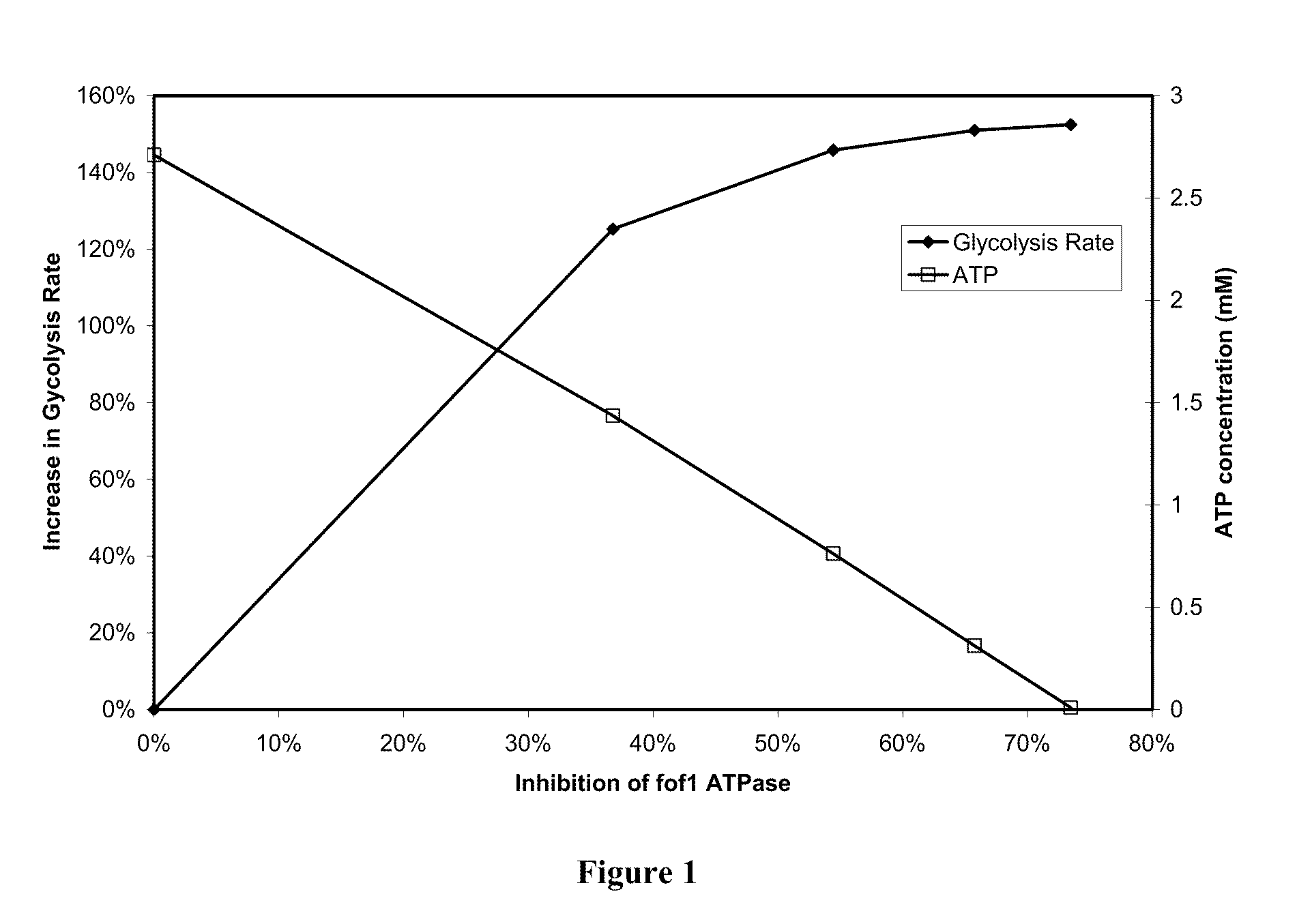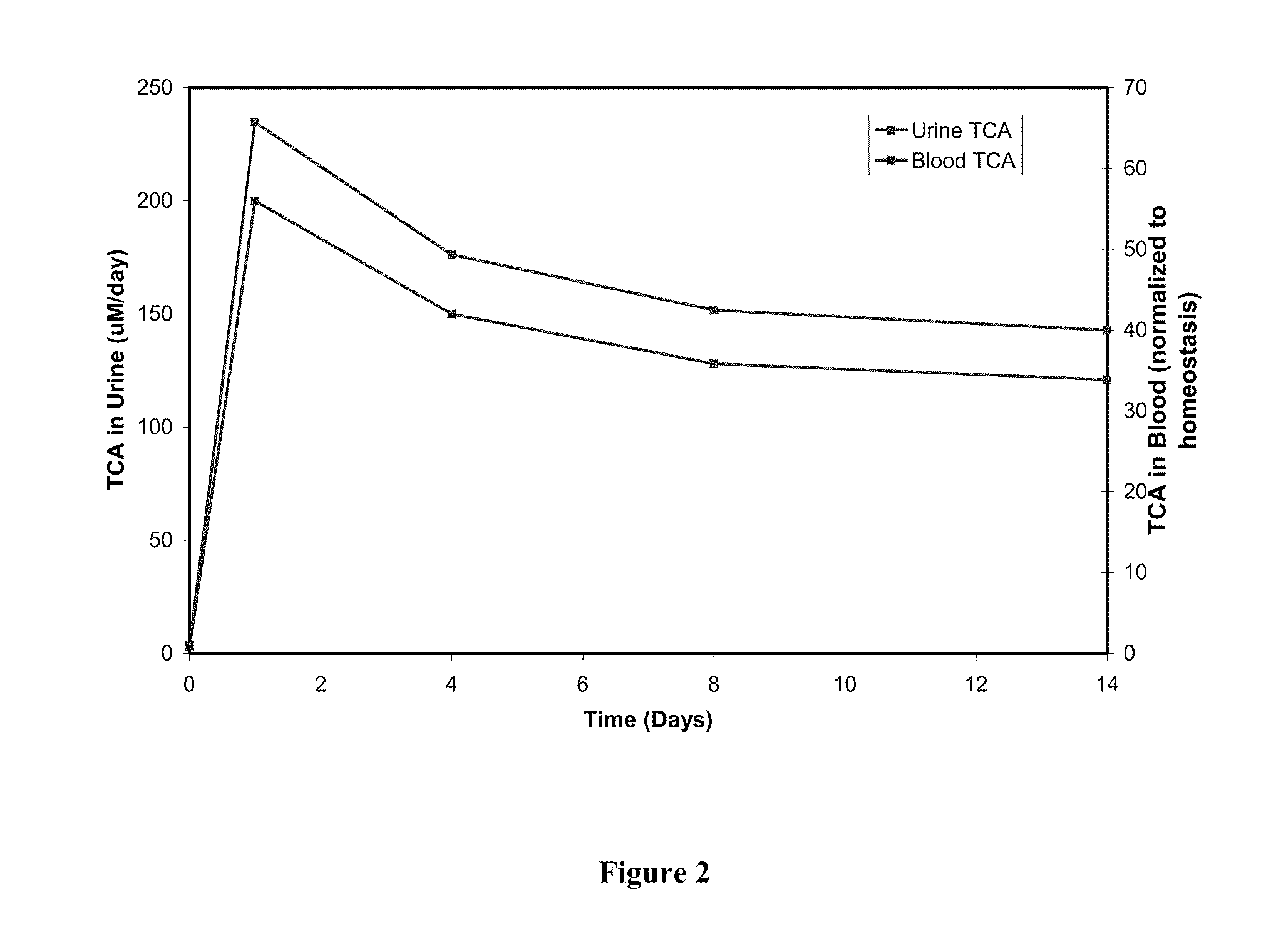Method for Predicting Organ Toxicity and a System Thereof
- Summary
- Abstract
- Description
- Claims
- Application Information
AI Technical Summary
Problems solved by technology
Method used
Image
Examples
example
[0119]Our approach is based on understanding the basis of liver homeostasis and its perturbations by drugs is reasonably versatile and accurate. It captures liver physiology well and is also able to depict the effect of a variety of drugs. Since the underlying biochemical framework on which it rests encompasses basic processes within the liver such as antioxidant, bile, energy and nutrient metabolism, it is likely to be comprehensive in its coverage of drug and disease settings. The methodology that has been employed to create this system is generic and can be applied to other organ and physiological systems as well.
[0120]There is a dearth of model systems that accurately predict toxicity, particularly idiosyncratic toxicity in humans. Since in vitro systems cannot reproduce variations in biochemistry due to genetic and environmental factors, they are not equipped to handle idiosyncratic toxicity. In our approach since we define the homeostasis or the “starting state” of the liver, ...
PUM
 Login to view more
Login to view more Abstract
Description
Claims
Application Information
 Login to view more
Login to view more - R&D Engineer
- R&D Manager
- IP Professional
- Industry Leading Data Capabilities
- Powerful AI technology
- Patent DNA Extraction
Browse by: Latest US Patents, China's latest patents, Technical Efficacy Thesaurus, Application Domain, Technology Topic.
© 2024 PatSnap. All rights reserved.Legal|Privacy policy|Modern Slavery Act Transparency Statement|Sitemap



